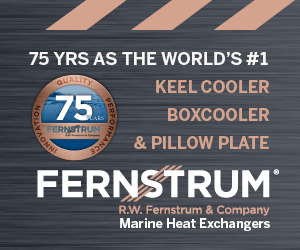State Of The Industry: GLDD Vice President Shares Thoughts On Dredging In The U.S.
With persistent high water and shoaling on many of the nation’s rivers, ongoing recovery from recent hurricanes and efforts to deepen seaports on the East Coast and Gulf Coast, Congress and the U.S. Army Corps of Engineers both have their hands full with maritime infrastructure needs.
And from the perspective of the dredging industry, commitment to channel deepening, restoration and maintenance has had positive impacts for the strength of the overall dredge fleet.
“The U.S. dredge fleet is growing as a result of investments in ports, waterways and coastal protection projects at federal, state and local levels,” said Bill Hanson, vice president of government relations for Great Lakes Dredge & Dock Company. “The fleet is dramatically more sophisticated and powerful than it was 10, 20 or 50 years ago.”
Hanson said the dredging industry in general is benefiting from a recent boost in funding, thanks to a commitment from Congress to regularly authorize waterway projects through biennial Water Resource Development Act (WRDA) bills and support with record annual appropriations.
“We think WRDA on a two-year [schedule] is a key reason for the improvement in our marketplace,” Hanson said. “But don’t forget the role of the appropriators in this discussion. The Corps has received record budgets each of the last four years, so Congress clearly understands how important the Corps is and, in addition, has funded the Harbor Maintenance Trust Fund way beyond the target levels (going from 50 percent to 95 percent in the last few years).”
Environmental Issues
Regulations governing many dredging projects also drive investment in the dredge fleet, Hanson said.
“Environmental issues have a big effect on project design,” Hanson said. “Whether it is air and water quality issues that are part of the equipment design or better protection of endangered species, we are constantly improving our equipment.”
A benefit of environmental concerns, Hanson said, is that they spur innovation. Particularly near the coast, the beneficial use of dredge material is a resounding success story.
“One of the great stories about that is the partnership with the New Orleans District and Big River Coalition to use cutterhead dredges instead of hoppers in the Mississippi River,” Hanson said. “As a result, over 10,000 acres have been created in the last eight years and at a cheaper price than was done before.”
There’s growing support for requiring 100 percent of dredging to beneficially use dredge material. The American Shore & Beach Preservation Association is just one of the organizations that has called for all dredged material to be recycled.
“Sediment is the critical building block of beaches, dunes and coastal ecosystems,” the organization said earlier this year in a statement on current Beneficial Use of Dredge Material (BUDMAT) projects within the Corps of Engineers. “In the face of eroding coastlines and sea level rise, sediment dredged from navigation channels should be treated as a valuable resource, not a waste product to be disposed of as cheaply as possible.”
At Head of Passes on the Lower Mississippi River, sediment is either pumped directly via pipeline or collected with a hopper dredge, deposited in a designated hopper dredge disposal site, then repositioned with a cutterhead via pipeline.
“That doesn’t happen all the time, but there are a lot of good examples around the country we think folks should celebrate,” Hanson said.
Safety Culture
Another important area of focus within the maritime realm has been safety, and that’s definitely true for the dredging industry. That’s reflected in the way technology has transformed dredges and pumping systems and in the use of automation aboard dredges. But just as important as technological advances is the safety culture that crews practice on board dredges, Hanson said.
“That is the biggest change in the industry in my career, and we are proud that Great Lakes Dredge & Dock has played a leading role in implanting an Incident and Injury Free (IIF) safety culture in everything we do,” Hanson said. “We really do care about getting our crews safely home each night, and have empowered them to act for themselves and their coworkers to make that happen.”
Hanson said, given all the factors above, he remains confident in the continued strength of the dredging industry.
“With WRDA on track, record funding for the Corps as well as record supplemental funding for coastal projects, and large-scale deepening projects like the one in Corpus Christi underway, there is a solid future near-term,” he said.


